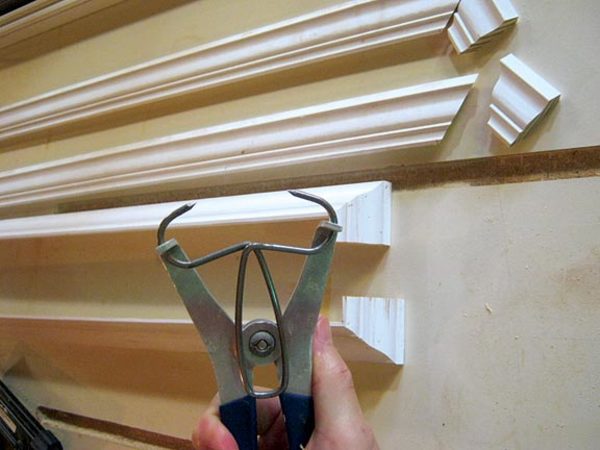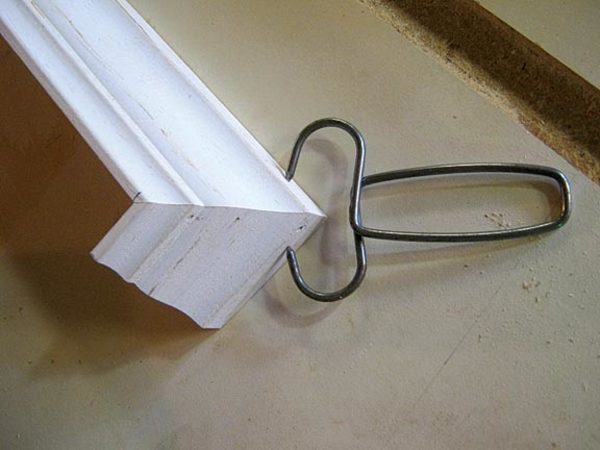A set of basic spring clamps (with specialty pliers to help open them) will only set you back about $30—well worth the investment if you’re creating complex molding profiles for an old house.
A sign of good carpentry is miters (the 90-degree joints formed at the intersection of two pieces of trim) that fit together nicely. For a good fit, mitered moldings must be cleanly and accurately cut, then secured with glue and finish nails. Miter clamps are a handy tool to have at your disposal when assembling pieces of mitered molding.
Miter clamps are made from spring steel, which has a powerful memory; when opened with pliers, the clamps work hard to push their way back to a closed position. When applied to the two pieces of trim that make up a mitered joint, these clamps function as a third hand, exerting pressure to hold the molding tightly together. Using the clamps can take some getting used to, but the learning curve is short.
Where to Use Them
Miter clamps can be used to “dry fit” pieces of molding to see how well they go together before committing to glue and nails. They’re also a boon for small pieces of trim (known as returns), which like to split when nailed (though pre-drilling holes or using small-gauge air nailers will minimize splitting). Miter clamps can hold these small pieces in place while the glue sets (with or without nails across the joint). Pressure applied by the clamps makes glued joints stronger and less likely to open up. The clamps also help to keep fingers out of harm’s way when using a nail gun on small return pieces.
Miter clamps also can be used to pre-assemble “picture frame” sets of window trim on a work table so the casing can be installed around the window as a single unit, rather than tacking four separate pieces of trim to the window jamb.
What to Look For
Miter clamps come in “spring clamp” and “clam clamp” varieties. Spring clamps can either be light-duty pinch clamps or heftier ring clamps, which are often sold in kits containing various sizes. Ring clamps are generally stronger, but the additional force leaves larger marks on the wood. Spring clamps can be used to assemble a wide variety of projects: door and window casings, molding, even picture frames.

Keep in mind that you’ll need a pair of specialty pliers to open most spring clamps safely. Don’t fool yourself into thinking you can save money by opening the clamps with your hands—after a few times of getting “bitten” by the clamps, you’ll end up buying the pliers anyway. Spring clamps vary in price from about $30 for a set of four Collins pinch clamps and pliers to $200 for a kit with 24 high-quality Ulmia ring clamps and pliers.
Clam clamps can only be used on large door and window casings and large picture frames—they don’t work for small casings or molding returns. They’re also expensive ($240 for a set of four clamps), but despite their limited use and price, clam clamps are outstanding tools for large (5″ or more) casing miters.
The Bottom Line
Can you miter trim without using clamps? Yes—but the process will be awkward, and the finished product won’t look nearly as nice. For a reasonable price, this simple, helpful tool can elevate your finish carpentry work.
Brian Campbell restores historic homes as the owner of Basswood Architectural Carpentry in Winona, Minnesota.







